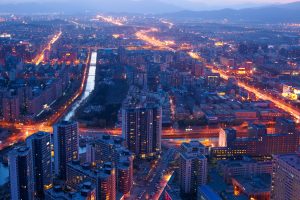The temperature in Beijing tipped into the 30s this week, hitting a high of 35 degrees Celsius today in a city that is unprepared to protect itself.
Or, at least not all of itself.
While the measures of extreme heat are fairly straightforward – temperatures are higher and show up earlier each year – there’s one more complicated factor that can determine the difference between life and death as temperatures climb: money.
A new study published in Nature has identified the sprawling Beijing municipal area, which includes Beijing, Tianjin, and Hebei, as particularly vulnerable to heat. Looking at the factors that put a population at risk, the researchers found that unprecedented bouts of extreme heat like today’s mid-May heat blast are particularly deadly. In particular, communities that are underprepared and unfamiliar with heat are vulnerable.
These findings match with the risks Greenpeace East Asia identified in a 2021 report on growing climate risk in China’s three major metropolitan areas: Beijing, Shanghai, and Guangzhou-Shenzhen. We found that risk is growing highest outside of metropolitan centers in the rapidly-developed urban sprawl that surrounds the city.
Taken together, these two reports make an alarming case that the communities most likely to suffer under extreme heat are also the ones most likely to face it. In the Nature report, authors write: “Beijing, Hebei, and Tianjin provinces of China and Germany, Netherlands, and Belgium are vulnerable in terms of population number, but as developed countries, are more likely to have heat plans to mitigate potential impacts.”
Greenpeace East Asia’s research in China, however, indicates that while this may be true of city centers, which are more developed with wealthier residents who have both better access to public services as well as simply better public services, this does not cover all of Beijing. Basic infrastructure like metro stations, public parks, and malls become refuges from extreme heat, particularly during the night. Extreme heat at night is especially dangerous for the elderly, who do not own air conditioning or can’t budget its use.
While these solutions are simple, implementing them requires active planning and the political initiative to create a response that crosses over different departments. Unfortunately, since our 2021 report, we’ve seen little progress in terms of developing the services, infrastructure, and plans to save lives during extreme heat. Across major cities, emergency response services remain siloed off by arbitrary divisions that don’t fit the systematic nature of climate change and related heatwaves.
China’s cities desperately need to pursue climate risk response plans. 2023 could be an El Niño year, the World Meteorological Organization warns, meaning that there is a higher likelihood of extreme heat oncoming. We are not prepared.

































